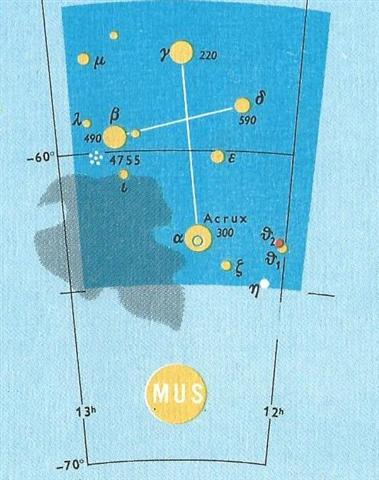The pair Makoi and Ngukuu were sons of Hua Tava:
When Ira assigned the important duty of Planter to Ngukuu he did not change his name into Kuukuu. Only when his order was put into action was the name Kuukuu appropriate:
Ngukuu was the firstborn son of Hua Tava and Makoi the lastborn. I have suggested these 7 early voyagers to Easter Island corresponded to the planets (Sun, Moon, Mars, Mercury, Jupiter, Venus, and Saturn, in the ancient Babylonian order) - stars who did not stand firm but moved (i.e. planets). They appeared to be alive and they all followed along the path of the ecliptic. ... The path of Sun (the ecliptic) is below the equator of the sky during half the year, at present beginning at Virgo and ending at the square of Pegasus. The position of Crux and the Coalsack Nebula (the head of the Emu), far down in the south, could suggest a causal connection with the path of Sun going down ... ... On Easter Island - far south of the equator - the seasons were 'upside down' compared to those north of the equator. I have therefore suggested the C text was beginning where Sirrah (the Navel of the Horse) was at the Full Moon, i.e. where the summer half of the year could be regarded to begin. This was where the Sun reached the Black Raven (Corvus) - whose shadow could be perceived close to the Southern Cross, below Mimosa (β Crucis):
... Raven gazed up and down the beach. It was pretty, but lifeless. There was no one about to upset, or play tricks upon. Raven sighed. He crossed his wings behind him and strutted up and down the sand, his shiny head cocked, his sharp eyes and ears alert for any unusual sight or sound. The mountains and the sea, the sky now ablaze with the sun by day and the moon and stars he had placed there, it was all pretty, but lifeless. Finally Raven cried out to the empty sky with a loud exasperated cry. And before the echoes of his cry faded from the shore, he heard a muffled squeak. He looked up and down the beach for its source and saw nothing. He strutted back and and forth, once, twice, three times and still saw nothing. Then he spied a flash of white in the sand. There, half buried in the sand was a giant clamshell. As his shadow fell upon it, he heard another muffled squeak. Peering down into the opening between the halves of the shell, he saw it was full of tiny creatures, cowering in fear at his shadow ...
Ngukuu should then correspond to Mars. In the Babylonian view Mars seems to have been placed before the beginning of the agricultural year:
|
|||||||||||||||||||||||||||||


